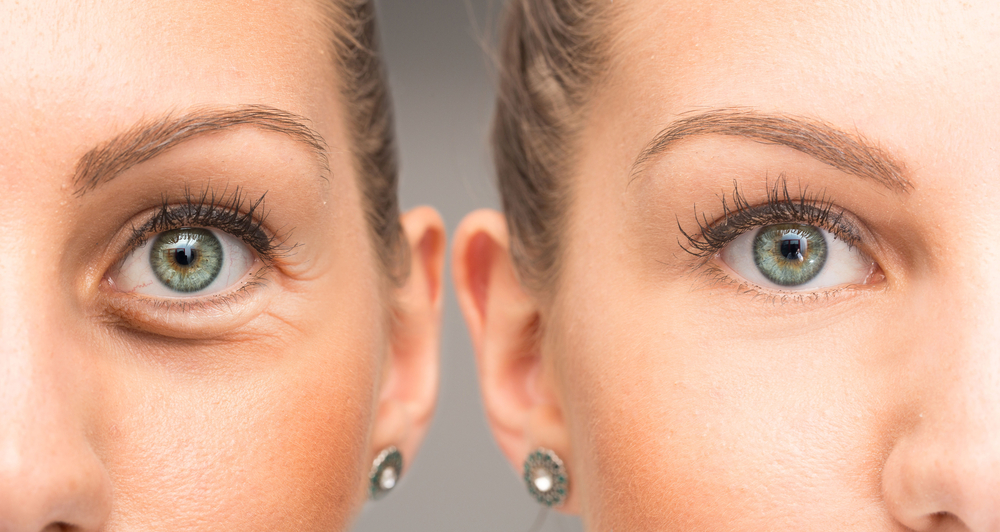- Mesotherapy involves injecting a cocktail of medications, vitamins, enzymes, hormones and other components into the skin.
- Proponents claim that the therapy can improve the skin’s appearance, melt away fat, treat hair loss and address aches and pains.
- Unfortunately, there’s no strong evidence to back up the safety or efficacy of mesotherapy; it is not approved by the FDA.
- There are some treatment options on the market that are proven effective at addressing the same concerns.
We all know injectables can do wonders: there’s a reason why Botox’s makers reported a net revenue of around $15 billion in 2018. But some say there’s a new game-changing injectable on the scene that’s about to shake things up. If the idea of injecting toxin into your skin doesn’t appeal to you, then mesotherapy just might. The technique claims to revitalize the skin by injecting a cocktail of vitamins, enzymes, hormones and plant extracts deep into the dermal layers.
Proponents of mesotherapy say it will help remove excess fat in areas such as the stomach, legs, arms, face, thighs and butt, while simultaneously smoothing away wrinkles and cellulite. Think of it as a miracle mix between body contouring and skin rejuvenation. Many experts, however, are skeptical about the efficacy of mesotherapy treatment. Does it really do what it claims to do? The answer, sadly, is no. In this article we will take a closer look at mesotherapy and confirm or debunk the various purported claims surrounding the treatment.
What is mesotherapy?
Mesotherapy is a non-surgical treatment used for a range of cosmetic applications. The Collins English Dictionary defines mesotherapy as “a cosmetic procedure in which minute doses of medication, vitamins, etcetera. are injected repeatedly into the mesodermal tissue under the skin to promote fat loss.”
The treatment is also touted as an alternative to cosmetic surgery for people who suffer from hair loss, cellulite and other cosmetic skin concerns. During the short procedure, a doctor uses a special injection gun to deliver multiple injections of the cocktail, each shot injected between 1 and 4 millimeters under the skin. Most people require between 3 and 15 sessions for optimal results, and treatments are generally administered over a two-week period.
Although the treatment is gaining considerable popularity in the United States, it isn’t new. In fact, French practitioner Dr. Michael Pistor invented mesotherapy in 1952, presenting his findings and hyping the procedure’s benefits up until his death in 2003. Due to Dr. Pistor’s work, the treatment has been popular in France and much of Europe and South America for most of the past and current century. Dr. Pistor founded the French Society of Mesotherapy in 1964.
According to the journal Plastic and Reconstructive Surgery, mesotherapy was once used for pain relief and to treat hair loss and psoriasis, but is now most often marketed as a non-surgical alternative to liposuction.
This is how mesotherapy works as a fat reduction treatment: a fine needle delivers different substances into the mesoderm (the middle layer of fat and connective tissue beneath the skin), targeting and melting away unwanted fat.
What’s in the needle?
Different applications require different mesotherapy treatment options for different cosmetic purposes. In other words, one mesotherapy injection might vary from another, depending on the desired results. That being said, most mesotherapy sessions require the injection of one or all of the following components:
- Prescription Medicines — Some, but not all mesotherapy injections include prescription medicines such as vasodilators, anti-inflammatory medications and antibiotics. Obviously, depending on your specific medical conditions, these medications can help ease pain, discomfort and other symptoms. Indeed, delivering a drug directly into the tissues allows it to diffuse slowly at lower dosages, which can make medication more tolerable compared with taking it orally. Vasodilators that dilate blood vessels, such as minoxidil (found in Rogaine) may be added for hair growth treatments.
- Lecithin — When mesotherapy is used for weight loss, doctors will often inject the fat cells with lecithin, a natural compound that helps the body digest fats. It’s often used alongside a medication called isoproterenol, an agent that helps break down fat cells by stimulating insulin release. The theory is that together, these components will help disperse fat deposits and allow the body to get rid of them, leading to circumferential reduction.
- Nutrients — In most cases, mesotherapy requires the injection of certain vitamins, minerals and plant extracts alongside medications and alleged fat-busting agents. The theory is that when consumed this way these additives are able to quickly absorb into the tissue and bloodstream, providing additional benefits compared with taking them orally. Usually, these nutrients are found in trace quantities in mesotherapy.
- Enzymes — The theory goes that enzymes and amino acids added to mesotherapy cocktails work with vitamins and minerals to improve the growth of collagen and elastin in the skin. They’re also said to help break down fat by enabling the body to better metabolize the substance once it’s been destroyed by the other ingredients.
- Hormones — Certain hormones, such as calcitonin and thyroxin, are often added to mesotherapy concoctions to help target certain ailments. For example, thyroid hormones may be used to help balance the metabolic rate, and ultimately cause weight loss. These hormones allegedly work alongside lecithin and isoproterenol to break down fat cells.
Does mesotherapy work?
The French Society of Mesotherapy (FSM) does not recognize mesotherapy as an effective treatment for weight loss, skin rejuvenation, or as a cellulite reduction treatment. It does, however, claim that the procedure can help mitigate pain, migraines, blood circulatory disorders, sports injuries and neuralgia. There is some evidence to suggest that mesotherapy treatments work when targeting pain.
There are several studies debunking the myth that mesotherapy could take the place of plastic surgery or other tried-and-true treatment methods like laser therapy. In terms of facial rejuvenation, one study found that patients who underwent mesotherapy to improve skin reported no significant improvements after three months. The same study found that the skin’s collagen and elastin levels were not altered during mesotherapy treatment.
When it comes to fat and cellulite, the results are equally as bleak. There are no clinical studies backing up the claim that mesotherapy can effectively treat cellulite or fat loss. What’s more, like most body contouring procedures, the success — if any — of mesotherapy will be temporary unless you add diet and exercise to your routine at the same time. Routine injections are also necessary.
So, what do the experts say? The American Society of Plastic Surgeons (ASPS) and the American Society for Aesthetic Plastic Surgery (ASAPS) do not recognize mesotherapy as a viable treatment option, citing a lack of scientific evidence proving its safety. What’s more, the U.S. Food and Drug Administration (FDA) haven’t approved the treatment either.
Mesotherapy Risks
As we’ve already discussed, mesotherapy treatments vary widely from one person to another. Because different medications are used for different applications, side effects vary widely. For example, patients who’ve used mesotherapy treatments containing isoproterenol have experienced anxiety, tremors, muscle cramps and palpitations.
If you plan to experiment with mesotherapy, the best course of action is to learn exactly what your doctor uses in their own mesotherapy mixes and discuss the side effects of the concoction with him or her from there. There are a few general side effects to mesotherapy, though. Adverse effects include nausea, vomiting, diarrhea, mild pain and bruising at the injection site. In some rare cases, faulty mesotherapy techniques have caused skin infections.
For these reasons, it’s generally not recommended for people who are pregnant or nursing or those who have HIV, hepatitis C, liver disease, kidney disease, active cancer, diabetes or thyroid problems. With that being said, it’s generally believed that the risks of mesotherapy are fairly small. But because there are so few conclusive studies on the treatment, it’s difficult to deduce whether it has any long-term adverse effects.
Smarter Alternatives
The good news, however, is even though mesotherapy is unlikely to help you shed pounds or lend you a more youthful glow, there are various tried-and-true treatments that actually will. The American Society of Plastic Surgeons (ASPS) recommends liposuction for adults within 30 percent of their ideal weight who want a slimmer figure. And while it’s relatively costly and the risk factors somewhat greater, hair transplant surgery is a proven way to correct bald spots and alopecia.
So, what about your skin? There are hundreds of unique facial treatments out there that will help smooth away wrinkles and deliver a youthful glow. Some of the most popular and effective professional skin enhancing treatments include facial fillers, chemical peels and laser skin resurfacing. If it’s healthy, glowing skin you’re after, the bottom line is there are far more effective treatments on the market than mesotherapy.









